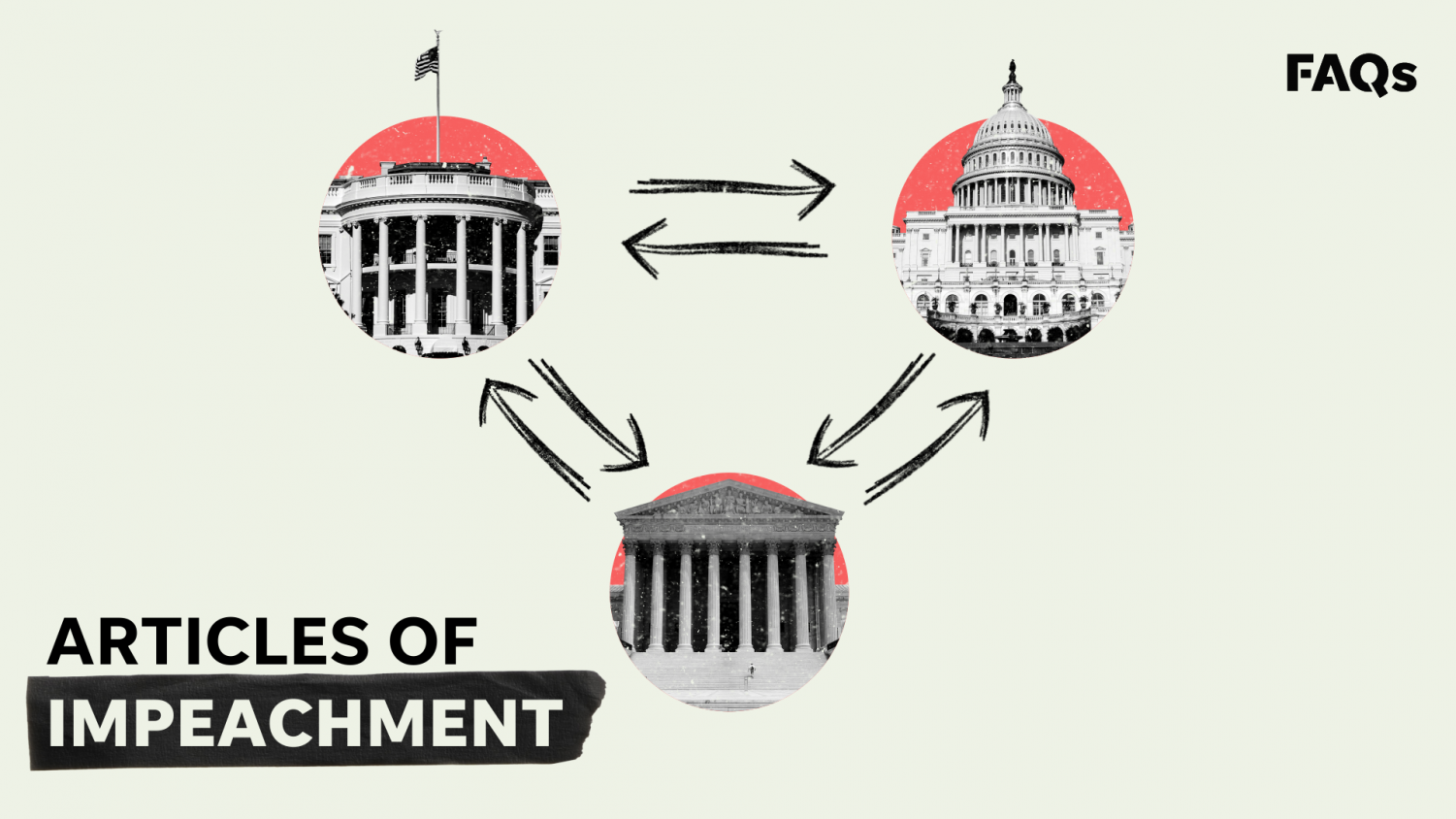Impeachment: The Non-Biased Basics
February 27, 2020
Over the past few months, the impeachment  of President Donald Trump has become a hot topic, with the process being subject to intense 24/7 coverage by countless news outlets across the country. No matter which side you’re on, it’s impossible to deny that the case has Americans on the edge of their seats. And yet, despite this, there seems to be a number of people who don’t understand what impeachment is, or how the process works (contrary to what the internet says , it DOES NOT involve putting the President into a giant peach; though political opinions aside, we kind of wish it did.) Perhaps the greatest responsibility that media outlets should be fulfilling now is not covering the impeachment events as they occur, rather, it’s educating the public about what impeachment is and what it involves
of President Donald Trump has become a hot topic, with the process being subject to intense 24/7 coverage by countless news outlets across the country. No matter which side you’re on, it’s impossible to deny that the case has Americans on the edge of their seats. And yet, despite this, there seems to be a number of people who don’t understand what impeachment is, or how the process works (contrary to what the internet says , it DOES NOT involve putting the President into a giant peach; though political opinions aside, we kind of wish it did.) Perhaps the greatest responsibility that media outlets should be fulfilling now is not covering the impeachment events as they occur, rather, it’s educating the public about what impeachment is and what it involves
Impeachment is, at its core, a mechanism for the U.S. government to remove a sitting president from office should they be deemed unable to fulfill their duties both effectively and with integrity. Excluding Donald Trump, three other presidents in the history of the United States have been impeached: Bill Clinton, Richard Nixon, and Andrew Johnson. Nixon resigned before his trial in the Senate, and both Clinton and Johnson were acquitted by the Senate. No U.S. president has ever been convicted through the process of impeachment.
There are several steps to the impeachment process. Firstly, a resolution to issue articles of impeachment must be introduced by a member of the House of Representatives. This resolution is given to the House Judiciary Committee, who votes on whether to proceed forward with this resolution or to drop the case. If the Judiciary Committee votes in favor of the resolution, the resolution will be brought to the floor for a vote from the entire House. The House also serves as the prosecutor in impeachment proceedings and has a duty to seek out facts and build a case against the president being impeached, generally naming a small group of representatives to serve as the prosecutors. If the House votes to issue articles of impeachment, these articles will be sent to the Senate.
Once the articles of impeachment have been introduced to the Senate for a vote, the trial begins, with the Senate serving as the jury, and the Chief Justice of the Supreme Court presiding over the process. The Senate will hear arguments from both the House prosecutors and any lawyers or other legal experts who are serving as the president’s defense team. The Senate also has the right to vote to hear additional evidence and can set many of the rules and parameters for the trial. Once arguments have been made, and the Senate feels they have enough evidence to make a decision, the articles of impeachment are put to a vote. If the Senate reaches a two-thirds majority in favor of impeachment, then the articles are successful and the president will be removed from office.
Impeachment is a long, brutal, and exhausting process, and not one to take lightly. The results of this fixture are often controversial and divisive; no matter the result, impeachment has a noticeable impact on a president and the American people as a whole. However difficult, impeachment allows our country to have a fair say in its leadership; a quality that’s unfortunately an exception, rather than a norm.



